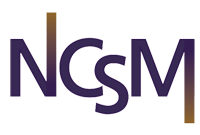Calls to Action in the Mathematics Classroom
Canada’s National Day of Truth and Reconciliation occurred for the first time on September 30th this year. As Canadians, we know this federal statutory day of commemoration was one of the Truth and Reconciliation Commission’s (TRC) Calls to Action and is an important step in the reconciliation process.
As educators, we also need to pause and reflect on how the impact of residential schools continues to create inequity in our classrooms. What are our Calls to Action as educators and as leaders of mathematics education? How do we improve the prosperity and well-being of Canada’s Indigenous population to the point that our Indigenous students feel empowered as learners?
Helping students develop a strong mathematical identity and ensuring they see their place in the learning community can be a powerful first step for not only marginalized students but for every student. Modeling positive math conversations, setting up routines that promote inclusive discourse, and ensuring we celebrate diverse thinking can increase a student’s sense of belonging and begin to build their identity as a mathematician. This means broadening a student’s definition of what it means to be a mathematician by not just focusing on skills, but also on the beliefs, attitudes, and mindsets of successful learners.
NCSM’s strategic initiative, Equity, and Access in Action continue to provide professional learning and resources for educators. NCSM’s position paper Improving Student Achievement by Leading the Pursuit of a Vision for Equity, although written thirteen years ago, provides eight impactful suggestions for educators wishing to build all students’ sense of belonging.
I encourage you to choose one of NCSM’s eight recommendations and make this your Call to Action.
Deanna Brajcich
NCSM Director: Canada
